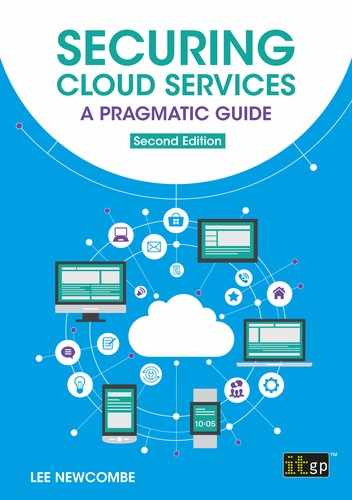0%
30Chapters
0-1Hours read
0kTotal Words
Book Description
Securing Cloud Services – A pragmatic guide gives an overview of security architecture processes and explains how they may be used to derive an appropriate set of security controls to manage the risks associated with working in the Cloud. Manage the risks associated with Cloud computing.Table of Contents
- Cover
- Title
- Copyright
- Preface
- About the Author
- Acknowledgements
- Contents
- Part 1: Securing Cloud services – setting the scene
- Introduction
- Chapter 1: Introduction to Cloud computing
- Chapter 2: Overview of existing Cloud taxonomies and models
- Chapter 3: The security balance
- Security benefits
- Data centre security
- Improved resilience
- Improved security patching
- Automation and DevSecOps
- Security expertise
- Knowledge sharing and situational awareness
- Improved information sharing mechanisms
- Renewal of security architecture and segmentation
- Potential pitfalls
- Availability
- Shadow IT
- Information leakage
- Lock-in
- Multi-tenancy
- Visibility
- Inflexible and/or inadequate terms and conditions
- Chapter 4: Security threats associated with Cloud computing
- Chapter 5: Privacy and regulatory concerns
- Part 2: Securing Cloud services – in practice
- Introduction
- Chapter 6: Introduction to security architecture
- Chapter 7: Application of security architecture to cloud computing
- Chapter 8: Security and the Cloud
- Chapter 9: Security and Infrastructure as a Service
- Chapter 10: Security and Platform as a Service
- Chapter 11: Security and Software as a Service
- Chapter 12: Security and Function as a Service
- Part 3: Conclusion
- Appendix A: SRM security service assignments
- Further reading
